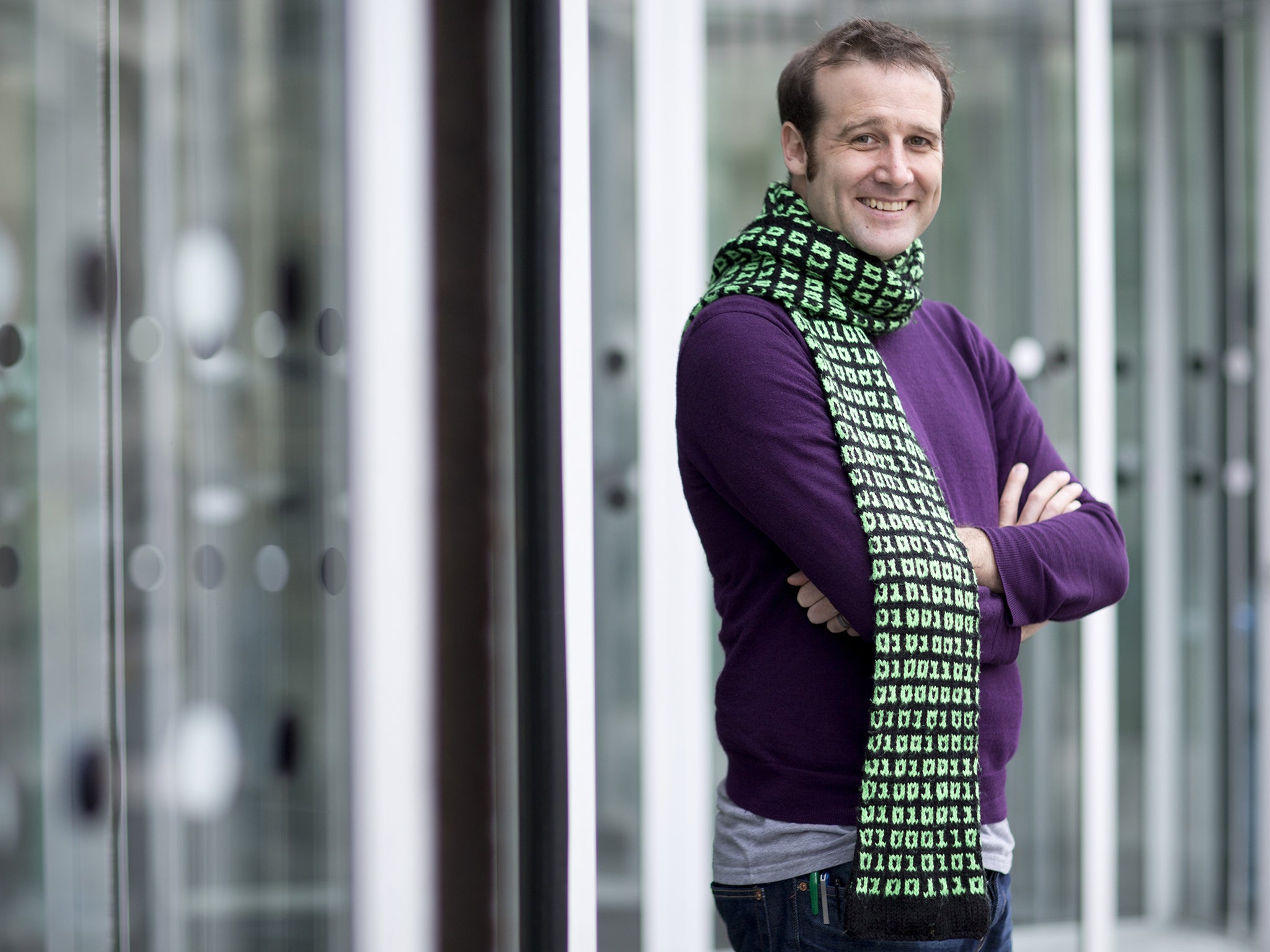"Stand-up mathematician" Matt Parker is using comedy nights to preach maths to big audiences
Simon Usborne joins Parker on a fun-filled trip to the Science Museum to talk about his first book

If there were any doubt about the scale of Matt Parker's geekiness, consider the way he met and married his wife, Lucie. "She was running a physics summer school at Imperial College and I was running the programming school," Parker says. "She heard a rumour that there was a guy outside who had a watch that told the time in binary. I was that guy!"
The couple got hitched last July, with wedding rings made from an iron-nickel meteorite that had crashed into Arizona tens of thousands of years earlier. "They have a structure that can only form if the alloy cools over millions of years with no gravity, so you know it couldn't have formed on Earth," he adds.
Parker, who says that the US sitcom The Big Bang Theory is "disturbingly true to life", is infectiously enthusiastic about science – but particularly maths – a subject that he is helping to yank from the airless classroom of your memory and revive it for the digital age. To discuss his new book about numbers, published this week, he has offered to take me on a tour of the Science Museum's maths and computing room.
We meet at the museum in London the day before the Queen popped in to open a new exhibition about communication. She made headlines by using an iPad to send her first tweet. Parker, who is 33, wants to look at the machines that made that possible. Charles Babbage's five-tonne difference engine, built in 2002 according to his 1822 plans, stands as a testament to Victorian, brass-cog ingenuity.
"What this does is trivial compared with what your phone can do, but with today's computers you can never see the bits," Parker says. "If someone tweets, 'Oh, maths is pointless', or they're complaining about it, they don't see all the maths going on in their phone and the networks that make that tweet possible."
The shrinking of maths into microscopic chips has combined, Parker says, with bad teaching to make it acceptable to dismiss the subject. "It's the one thing you're still allowed to be proud of being bad at," he says as we pass a cabinet containing half of Babbage's brain. "No one walks around saying, 'I'm terrible at reading – I just can't read or write', but people are almost proud of being ignorant of this huge achievement of humankind, the discipline that underpins our society."
Parker, a "stand-up mathematician", wants to change that and is part of a growing community of self-avowed geeks who use YouTube and even comedy nights to preach maths to huge audiences. His book, Things to Make and Do in the Fourth Dimension, seeks to reconnect us to the numbers around us with a series of stealth lessons dressed up as tricks, games and puzzles.
In chapter 12, "how to build a computer", Parker does so, to visualise the ever-shrinking circuits that replaced Babbage's cogs "I calculated a way to make simple circuits using chains of 10,000 dominoes," he explains. "If you line them up the right way you can build circuits that can do basic calculations. It's incredibly slow and hugely inefficient, but you can see it."
Over at the calculator display, Parker looks nostalgically at the 1979 Little Professor, that yellow-and-brown device with a moustache that your show-off friend had at school. Growing up in Perth in Australia, he never got the memo about maths being boring. "My dad is an accountant so brainwashed me from a young age," he says. "Before I even went to school, he would bring me maths activity books as a treat."
When he did get to school, Parker realised that not everyone found maths fun, and he gets why. "It's very easy to be put off if you miss a bit or have a year with a really boring teacher. It can scar you for life," he says. But Parker kept on loving it, as well as science, later becoming a member of his school's titration team (the competitive analysis of acids is a thing in Australia, apparently).
A degree in maths and physics followed, before a move to London to teach. Parker is now the Public Engagement in Mathematics Fellow at Queen Mary, University of London. A few years ago, he took a stand-up comedy course and discovered a growing market for geeky laughs. He joined the London circuit and in 2011 co-founded the Festival of the Spoken Nerd ("physics porn for the sci-curious", as one reviewer put it). He's also part of the insanely popular Numberphile YouTube channel, also launched in 2011, which has a million subscribers and almost 100 million video views. Parker's most popular clip is a 13-minute exploration of the number zero that has been viewed 1.3 million times.
"There has been a huge resurgence of maths as entertainment," he says. "It's great, because once we change that culture of maths and science as things to be endured at school, we can enjoy and celebrate them as incredibly useful."
As we leave to meet the photographer, Parker pulls from his bag a scarf made up of rows and rows of ones and zeros. "My mother knitted it for me," he says. "It's all in binary code – each row is a letter. Some digits tell you the position in the alphabet, and the others tell you if it's upper or lower case."
So what does it say? "'MATHS IS FUN, KEEP DOING MATHS'... Mum knits like she texts."
Subscribe to Independent Premium to bookmark this article
Want to bookmark your favourite articles and stories to read or reference later? Start your Independent Premium subscription today.

Join our commenting forum
Join thought-provoking conversations, follow other Independent readers and see their replies